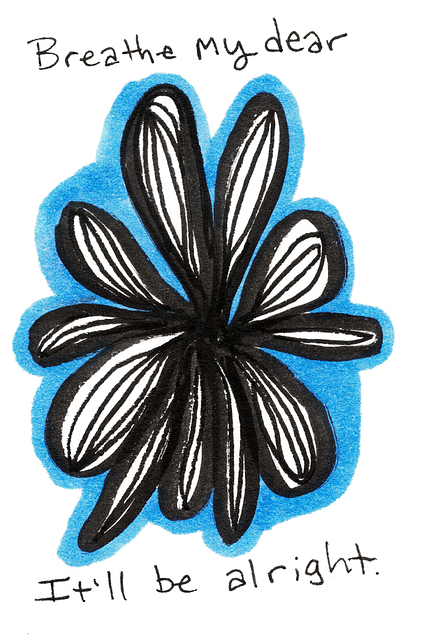In Colorado Springs, adolescent and teen substance abuse is a growing concern, exacerbated by the city's outdoor culture. Local therapy services play a crucial role in early intervention through specialized programs, counseling, and community outreach. Creating a supportive home environment with positive parenting techniques and stress management workshops also prevents abuse. Early intervention through mental wellness coaching and structured therapy programs improves outcomes for at-risk teens. Specialized long-term recovery plans, including aftercare and support groups, ensure lasting results. Colorado Springs Adolescent and Teen Therapy holistically addresses these issues to foster a healthier future for its youth.
In Colorado Springs, adolescent substance abuse poses significant risks, impacting not just individuals but entire communities. This article explores comprehensive risk reduction strategies tailored for this demographic. We delve into understanding the unique challenges faced by teens, with a focus on early detection and intervention. Parenting strategies for prevention, access to effective treatment programs, and building resilience post-recovery are also covered. Discover how Colorado Springs adolescent and teen therapy can serve as a lifeline, guiding young people towards healthier, substance-free lives.
- Understanding the Risks of Substance Abuse Among Adolescents and Teens in Colorado Springs
- Creating a Supportive Environment at Home: Parenting Strategies for Prevention
- Early Intervention and Detection: Identifying Signs and Seeking Help
- Accessing Effective Treatment Programs for Adolescent Substance Abuse
- Building Resilience and Long-Term Recovery: Aftercare and Community Support
Understanding the Risks of Substance Abuse Among Adolescents and Teens in Colorado Springs

In Colorado Springs, the risks associated with substance abuse among adolescents and teens are significant. This growing demographic faces unique challenges that can exacerbate the dangers of drug and alcohol use. Statistics indicate a rising trend in substance abuse cases among young people, leading to severe health consequences, academic issues, and social problems. The city’s vibrant community, often perceived as a haven for outdoor adventures, might inadvertently contribute to these risks, as teens seek novel experiences that can be detrimental to their well-being.
Colorado Springs adolescent and teen therapy services play a pivotal role in mitigating these risks. Through specialized programs and counseling, professionals focus on early intervention, communication strategies, and mood management techniques. Community outreach program implementation is another vital aspect, aiming to educate young people about the potential consequences of substance abuse while fostering healthy coping mechanisms. By addressing these issues proactively, Colorado Springs seeks to break the cycle of addiction and promote a brighter future for its youth.
Creating a Supportive Environment at Home: Parenting Strategies for Prevention

Creating a supportive environment at home is a fundamental strategy in preventing substance abuse among adolescents and teens. Parents play a pivotal role in shaping their child’s decisions and behaviors. By implementing positive parenting techniques, such as open communication, consistent boundaries, and encouragement of healthy coping mechanisms, parents can effectively reduce the risk of substance misuse. Incorporating stress reduction methods and crisis intervention guidance into daily routines can help teenagers navigate challenging situations without resorting to substances for relief.
The Stress Management Workshops Organization in Colorado Springs offers valuable resources for families seeking to enhance their parenting skills. These workshops provide evidence-based techniques for stress management, empowering parents to guide their adolescents towards healthier alternatives. By fostering a home environment that prioritizes emotional well-being and open dialogue, parents can serve as powerful allies in the fight against substance abuse, ensuring their teens have the tools to make informed choices.
Early Intervention and Detection: Identifying Signs and Seeking Help

Early intervention is a powerful tool in the battle against substance abuse, especially for adolescents and teenagers. Recognizing the signs of potential addiction and seeking professional help can make all the difference in a young person’s life. Many times, individuals struggling with substance abuse may display changes in behavior, mood swings, or isolation from friends and family. At-risk teens might also exhibit poor academic performance, lack of interest in activities they once enjoyed, or unusual secretiveness.
In Colorado Springs, adolescent and teen therapy plays a crucial role in early intervention strategies. Mental wellness coaching programs focus on developing emotional intelligence, which can help young individuals understand and manage their emotions effectively. By addressing underlying issues like depression prevention, these programs empower teens to make healthier choices and build resilience against substance abuse. Early detection allows for timely support, guiding them towards better mental health and a brighter future.
Accessing Effective Treatment Programs for Adolescent Substance Abuse

In addressing adolescent substance abuse, accessing effective treatment programs is a pivotal step. Colorado Springs offers a range of specialized services tailored for young individuals struggling with addiction. These programs often incorporate individual therapy, group support, and evidence-based practices to address underlying causes and promote healing. A key aspect involves fostering resilience through structured environments that encourage self-care routine development for better mental health. By integrating activities that enhance coping mechanisms and stress management, adolescents can build skills to navigate challenges without resorting to substance abuse.
Additionally, Mental Health Policy Analysis and Advocacy plays a crucial role in ensuring access to quality care. Local initiatives and community partnerships can drive awareness, reduce stigma, and improve resources available for at-risk teens. This collective effort not only supports individuals seeking help but also strengthens the overall mental health ecosystem, ultimately contributing to a healthier and more resilient community.
Building Resilience and Long-Term Recovery: Aftercare and Community Support

After a period of intense treatment and therapy for substance abuse, transitioning to long-term recovery is crucial. This involves building resilience against potential triggers and cravings that may arise. At Colorado Springs Adolescent and Teen Therapy, we emphasize the importance of comprehensive aftercare plans tailored to each individual’s unique needs. These plans often include ongoing counseling sessions, support groups, and participation in mental health education programs designed to enhance coping strategies for stress and mood management.
Community support plays a pivotal role in fostering a healthy environment conducive to recovery. Accessing local resources, such as peer support networks and community-based activities, helps individuals reintegrate into society while maintaining their sobriety. By combining professional therapy with strong social connections, we empower adolescents and teens to thrive and prevent relapse, ensuring they have the tools needed for lasting mental health and well-being.
Substance abuse among adolescents and teens in Colorado Springs can be mitigated through a multi-faceted approach. By fostering a supportive home environment, implementing early intervention strategies, and providing access to effective treatment programs, parents and caregivers can empower young individuals to make healthier choices. Additionally, building resilience and connecting with aftercare and community support networks are essential for long-term recovery. Colorado Springs adolescent and teen therapy services play a crucial role in this process, offering specialized care tailored to the unique needs of this demographic. Through collective efforts, we can navigate these challenges and create a brighter future for our youth.














